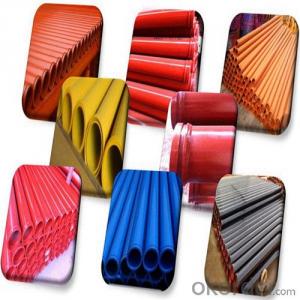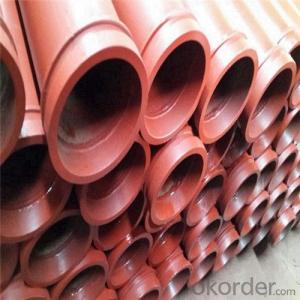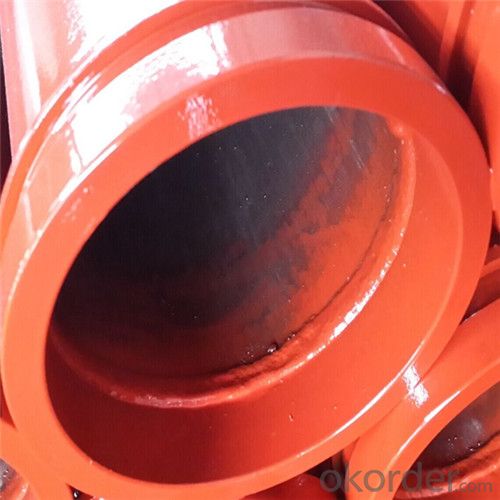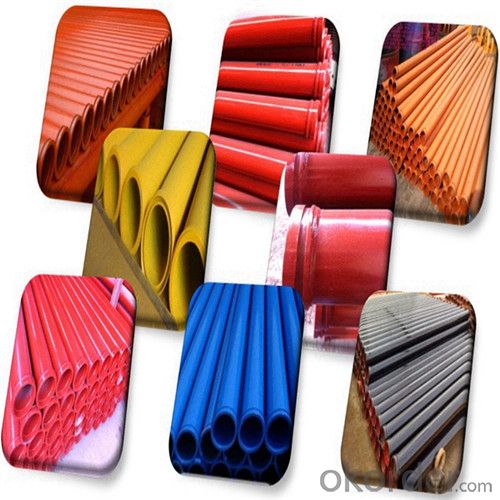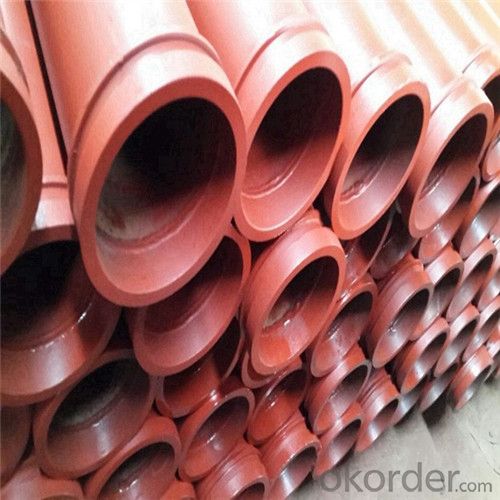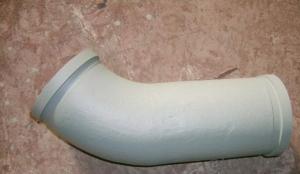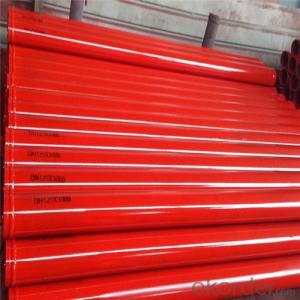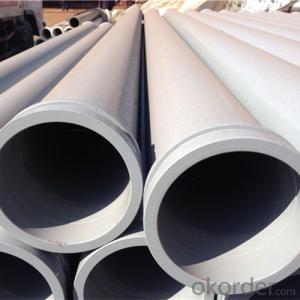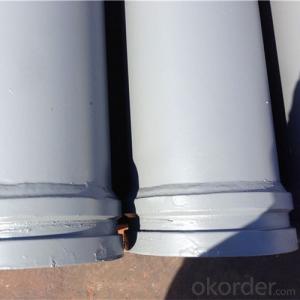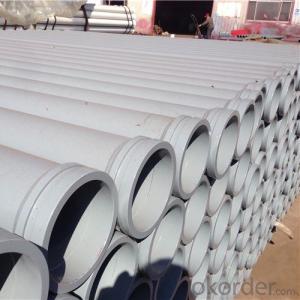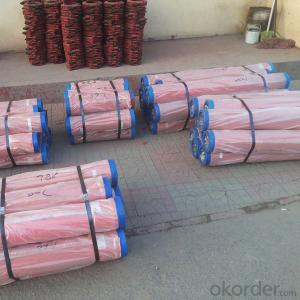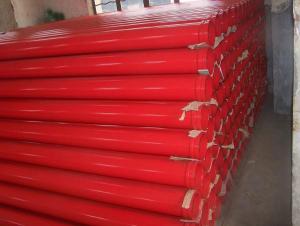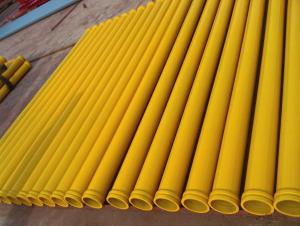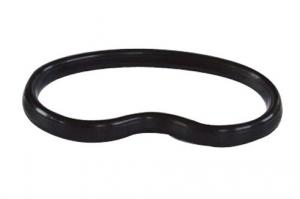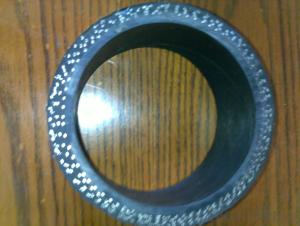3M 45Mn2 Delivery Pipe for Concrete Pump
- Loading Port:
- Tianjin
- Payment Terms:
- TT or LC
- Min Order Qty:
- 50 pc
- Supply Capability:
- 5000 pc/month
OKorder Service Pledge
OKorder Financial Service
You Might Also Like
3M 45Mn2 Delivery Pipe for Concrete Pump
1. Structure of 3M 45Mn2 Delivery Pipe for Concrete Pump:
St52 Weld Pipe: Main use for Trailer-mounted pump, thickness has 4.0mm, 4.5mm, 5mm. Compare with for Truck-mounted pump. Weld pipe has cheaper price, so it is popular in Saudi, Pakistan, India, etc. Unit Price is about 30USD-33USD.
St52 Seamless Pipe: Now More People like use this kind for Truck Pump and Trailer Pump because of the quality is better and it is seamless kind, so this kind pipe is most popular in Middle East Price About 34USD-37USD.
Wear Resistant Pipe: Use for Truck Pump, Wear Resistant Layer is 2.5mm.Through heat treatment way make this pipe more strong (HRC60-62), Using Life: 25,000m³-35,000m³ Price about 65USD-68USD.
2. Main Features of 3M 45Mn2 Delivery Pipe for Concrete Pump:
• In case of quality problem the company provide free replacement.
• Provide consumers with regular visits
• Ensure the supply of ancillary parts
• Our company passed the ISO9000 certification, the product through 3C certification in full compliance with national standards
3. 3M 45Mn2 Delivery Pipe for Concrete Pump Images
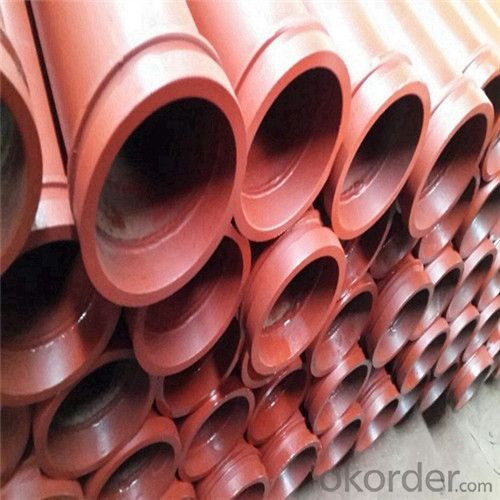
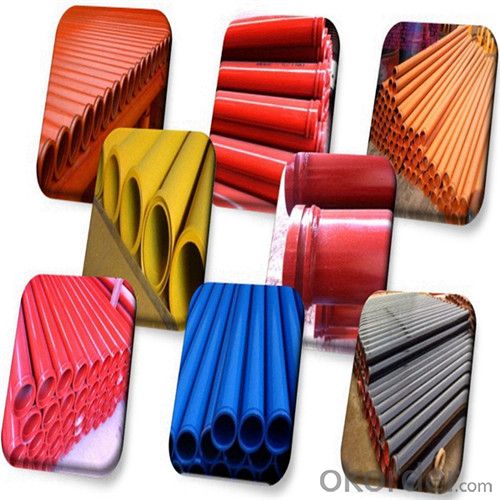
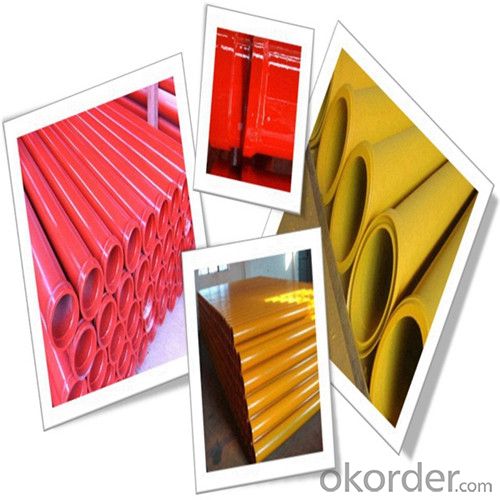
4. 3M 45Mn2 Delivery Pipe for Concrete PumpSpecification
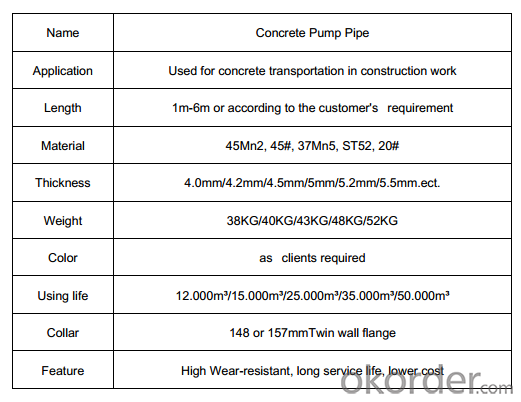
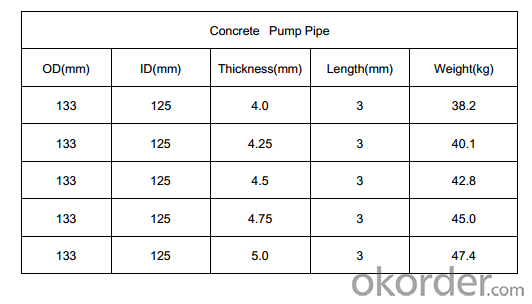
Production Process
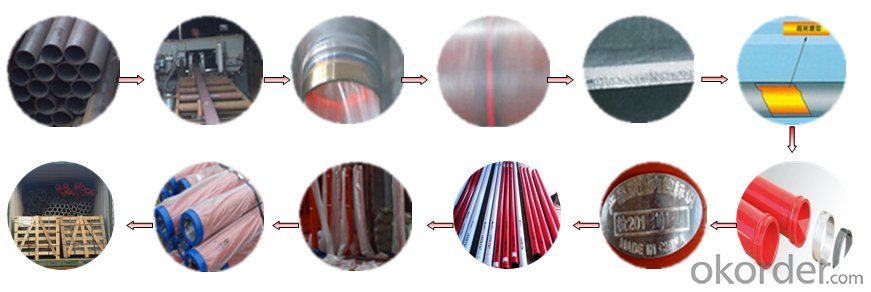
5. FAQ:
①Is your products exported a lot?
We have exported to many, many countries. Every year we ship more than 30 containers of these spare parts. Our main market is in Middle-east, Asia & Africa.
②How to guarantee the quality of the products?
We have established the international advanced quality management system,every link from raw material to final product we have strict quality test;We resolutely put an end to unqualified products flowing into the market. At the same time, we will provide necessary follow-up service assurance.
③How long can we receive the product after purchase?
In the purchase of product within three working days, we will arrange the factory delivery as soon as possible. The specific time of receiving is related to the state and position of customers. Commonly 15 working days can be served.
6. Why choose us
• We are a comprehensive manufacturing and trading company.
• Our company is one of the biggest manufacturing and trading companies in China.
• We have been specialized in producing concrete pump spare parts and specialized in producing all kinds of concrete pump parts. As Concrete Pump Pipe, Concrete Pump Elbow, Concrete Pump Rubber Hose, Concrete Pump Wear Plate, Concrete Pump S Valve, Concrete Pump Piston and so on.
• We are famous for our superior quality, competitive prices, first-class craftworks, safe package and prompt delivery.
• We have been supplying concrete pump parts for SCHWING, PUTZMEISTER, SANY, CIFA, KYOKUTO, ZOOMLION for 10 years, so we can promise you the quality and best price.
- Q: Are there any maintenance tips to extend the lifespan of concrete pump spare parts?
- Yes, there are several maintenance tips to extend the lifespan of concrete pump spare parts. Regular cleaning and lubrication of the parts, proper storage to prevent corrosion, and routine inspection for wear and tear are essential. Additionally, using high-quality spare parts and following manufacturer's guidelines for maintenance and operation can significantly increase their longevity.
- Q: How does a hydraulic oil cooler maintain optimal temperature in a concrete pump?
- In order to maintain the ideal temperature in a concrete pump and prevent potential issues, it is crucial to have a hydraulic oil cooler. The hydraulic system of a concrete pump is constantly exposed to high pressure and heavy loads, causing the oil within the system to heat up quickly. If the oil temperature exceeds the recommended range, it can lead to decreased efficiency, increased wear and tear, and even system failure. To avoid these problems, a hydraulic oil cooler is installed in the concrete pump. This cooler utilizes a heat exchanger to transfer the excess heat from the hydraulic oil to the surrounding air or another cooling medium, such as water or a refrigerant. This process effectively lowers the temperature of the hydraulic oil, keeping it within the optimal range for operation. The hydraulic oil cooler typically consists of fins or tubes that allow the hot oil to flow through. These fins or tubes increase the surface area of contact between the oil and the cooling medium, enabling efficient heat transfer. In some cases, a fan or pump may be used to enhance the airflow or flow of the cooling medium, further improving the cooling process. By maintaining the hydraulic oil at the ideal temperature, the hydraulic oil cooler ensures that the concrete pump operates at its highest level of performance. This not only increases the overall efficiency and productivity of the pump but also extends the lifespan of critical components. Additionally, by preventing overheating, the hydraulic oil cooler helps to minimize the risk of unexpected downtime and costly repairs. In conclusion, a hydraulic oil cooler is an essential component in a concrete pump as it effectively dissipates excessive heat from the hydraulic oil, ensuring optimal temperature and contributing to the overall productivity and reliability of the pump.
- Q: How can a faulty gearbox affect the pump's performance?
- The performance of a pump can be significantly affected by a faulty gearbox, which is responsible for transmitting power from the motor to the pump. Any dysfunction in this component can result in various issues. To begin with, a decrease in the pump's efficiency can be caused by a faulty gearbox. Its purpose is to regulate the speed and torque of the pump, ensuring optimal operation. If the gearbox is faulty, it may not be able to provide sufficient power to the pump, leading to reduced performance and efficiency. This can result in increased energy consumption and decreased overall productivity. Moreover, excessive vibration and noise can be experienced by the pump due to a faulty gearbox. A properly functioning gearbox helps absorb and distribute the forces generated during operation, minimizing vibration and noise levels. However, if the gearbox is faulty, it may fail to adequately dampen these forces, resulting in heightened vibrations and noise. This can not only affect the pump's performance but also cause premature wear and tear of other components, further impacting its efficiency. Furthermore, inconsistent flow rates and pressure fluctuations can be caused by a faulty gearbox. The gearbox plays a crucial role in controlling the speed and output of the pump. If it is malfunctioning, it may be unable to maintain a consistent flow rate or pressure, leading to fluctuations in the pump's performance. Inconsistent flow rates can disrupt processes that rely on precise volumes or pressures, causing inefficiencies and potential damage to downstream equipment. In conclusion, the performance of a pump can be detrimentally affected by a faulty gearbox. It can lead to decreased efficiency, increased vibrations and noise, as well as inconsistent flow rates and pressure fluctuations. Therefore, it is crucial to regularly maintain and promptly repair or replace faulty gearboxes to ensure the optimal functioning of pumps and prevent any further damage or operational issues.
- Q: What are the advantages of using carbon fiber components in concrete pump spare parts?
- There are several advantages of using carbon fiber components in concrete pump spare parts. Firstly, carbon fiber is known for its high strength-to-weight ratio. This means that carbon fiber components can provide the same strength as traditional materials such as steel or aluminum but with significantly less weight. This results in lighter spare parts, making them easier to handle and install, and also reducing the overall weight of the concrete pump system. Secondly, carbon fiber is highly resistant to corrosion. Unlike steel, carbon fiber does not rust or corrode when exposed to moisture or chemicals. This makes carbon fiber components ideal for use in concrete pump spare parts, as they are constantly exposed to water, cement, and other corrosive substances. The corrosion resistance of carbon fiber ensures the longevity and durability of the spare parts, reducing the need for frequent replacements and maintenance. Another advantage of carbon fiber components is their high stiffness. Carbon fiber is known for its rigidity and low flexural deformation, which means that the spare parts made from carbon fiber will have minimal deflection under load. This stiffness helps to maintain the overall stability and performance of the concrete pump system, ensuring accurate and efficient pumping of concrete. Additionally, carbon fiber has excellent fatigue resistance. Concrete pump spare parts are subjected to continuous cyclic loading and unloading, which can lead to fatigue failure over time. However, carbon fiber components have the ability to withstand these cyclic loads without compromising their structural integrity. This improves the reliability and lifespan of the spare parts, reducing downtime and maintenance costs. Lastly, carbon fiber offers design flexibility. It can be easily molded into complex shapes and geometries, allowing for customized spare parts that can be tailored to specific requirements. This flexibility in design enables the optimization of the spare parts' performance, enhancing the overall efficiency and productivity of the concrete pump system. In conclusion, the advantages of using carbon fiber components in concrete pump spare parts include their high strength-to-weight ratio, corrosion resistance, stiffness, fatigue resistance, and design flexibility. These qualities contribute to the improved performance, durability, and cost-effectiveness of the concrete pump system.
- Q: How can one extend the lifespan of concrete pump spare parts?
- To extend the lifespan of concrete pump spare parts, there are several measures that can be taken: 1. Regular maintenance: It is crucial to perform regular maintenance on the concrete pump spare parts. This includes cleaning, lubricating, and inspecting the parts for any signs of wear or damage. By addressing any issues early on, you can prevent further damage and prolong the lifespan of the parts. 2. Proper storage: When not in use, it is important to store the spare parts in a clean and dry environment. Exposure to moisture, dust, and other contaminants can lead to corrosion and deterioration of the parts. Storing them in a designated area with appropriate protection can help prevent these issues. 3. Quality parts: Investing in high-quality spare parts can greatly influence their lifespan. Opting for reputable brands and manufacturers that produce durable and reliable parts can ensure their longevity. Although they may be more expensive initially, they will likely save you money in the long run as they will require less frequent replacement. 4. Proper usage: Following the manufacturer's guidelines and instructions for the concrete pump spare parts is crucial. Overloading or operating the equipment improperly can put excessive strain on the parts, leading to premature wear and tear. Using the parts within their recommended capacity and following proper operating procedures will help extend their lifespan. 5. Training and supervision: Ensuring that operators and maintenance personnel are properly trained and supervised can have a significant impact on the lifespan of concrete pump spare parts. Educating them on best practices, proper handling, and maintenance techniques will help prevent misuse or mishandling that can result in damage to the parts. 6. Regular inspections: Conducting regular inspections of the spare parts can help identify any potential issues early on. This can include checking for signs of wear, damage, or misalignment. By addressing these issues promptly, you can prevent further damage and extend the lifespan of the parts. By implementing these measures, you can significantly extend the lifespan of concrete pump spare parts, reducing downtime and improving efficiency in construction projects.
- Q: What is the role of a concrete pump hopper agitator blade?
- The role of a concrete pump hopper agitator blade is to ensure the consistency and flow of the concrete while it is being pumped. The agitator blade is designed to mix the concrete in the hopper, preventing it from settling or becoming too thick. By continuously stirring the concrete, the agitator blade helps to maintain its proper consistency, making it easier to pump and ensuring a more uniform distribution of the material. This is particularly important when working with large volumes of concrete or when pumping over long distances, as it helps to prevent blockages and maintain a smooth and efficient pumping process. Overall, the agitator blade plays a crucial role in the successful operation of a concrete pump, ensuring that the concrete remains in a workable state throughout the pumping process.
- Q: How often should a concrete pump wear plate be replaced?
- A concrete pump wear plate should be replaced when it shows signs of significant wear and tear or when it starts to affect the performance and safety of the pump. The replacement frequency can vary depending on factors such as the type of concrete being pumped, the pump's usage, and the quality of the wear plate. Regular inspection and maintenance can help determine the appropriate replacement schedule.
- Q: How can a faulty concrete pump S valve affect the concrete flow?
- A faulty concrete pump S valve can affect the concrete flow by causing disruptions, blockages, or uneven distribution of the concrete. The S valve is responsible for controlling the direction of the concrete flow, and when it malfunctions, it can lead to decreased or inconsistent flow rates. This can result in delays in the construction process, poor concrete quality, or even damage to the pump system.
- Q: How can one identify the correct thread size and type for concrete pump spare parts?
- To identify the correct thread size and type for concrete pump spare parts, one can start by consulting the manufacturer's specifications and documentation. These resources often provide detailed information on the thread size and type used in the equipment. Additionally, measuring the existing thread on the spare part or the corresponding component can help determine the correct thread size and type. Utilizing thread gauges or consulting a professional in the industry can also provide accurate identification of the required thread size and type for concrete pump spare parts.
- Q: What is the importance of a good quality concrete pump seal?
- A good quality concrete pump seal is of utmost importance for several reasons. Firstly, it ensures the efficient and reliable functioning of the concrete pump. The seal is responsible for preventing any leakage or loss of pressure during the pumping process, which can lead to delays, inefficiencies, and potential damage to the pump itself. Moreover, a good quality seal helps maintain the integrity of the concrete being pumped. Concrete is a mixture of various materials, including water, cement, aggregates, and additives. To achieve the desired strength and durability, it is crucial that the concrete remains in its optimal state without any contamination or dilution. A high-quality seal prevents any external elements, such as water or air, from entering the pumping system and affecting the concrete's composition. Furthermore, a reliable seal contributes to the safety of the pumping operation. Concrete pumps are used in construction sites, where workers and equipment are present. Any failure or malfunction of the seal can lead to unexpected incidents, injuries, or damage to property. Therefore, a good quality seal provides peace of mind and reduces the risk of accidents. Lastly, investing in a good quality concrete pump seal can save both time and money in the long run. A durable and efficient seal minimizes the need for frequent replacements or repairs, reducing maintenance costs and downtime. It also ensures a smooth and continuous pumping process, allowing construction projects to be completed more efficiently and on schedule. In conclusion, a good quality concrete pump seal is crucial for the efficient functioning, integrity of the concrete, safety, and cost-effectiveness of a pumping operation. Therefore, it is essential to prioritize the selection and installation of a reliable seal to ensure the success and longevity of concrete pumping projects.
Send your message to us
3M 45Mn2 Delivery Pipe for Concrete Pump
- Loading Port:
- Tianjin
- Payment Terms:
- TT or LC
- Min Order Qty:
- 50 pc
- Supply Capability:
- 5000 pc/month
OKorder Service Pledge
OKorder Financial Service
Similar products
Hot products
Hot Searches
Related keywords


